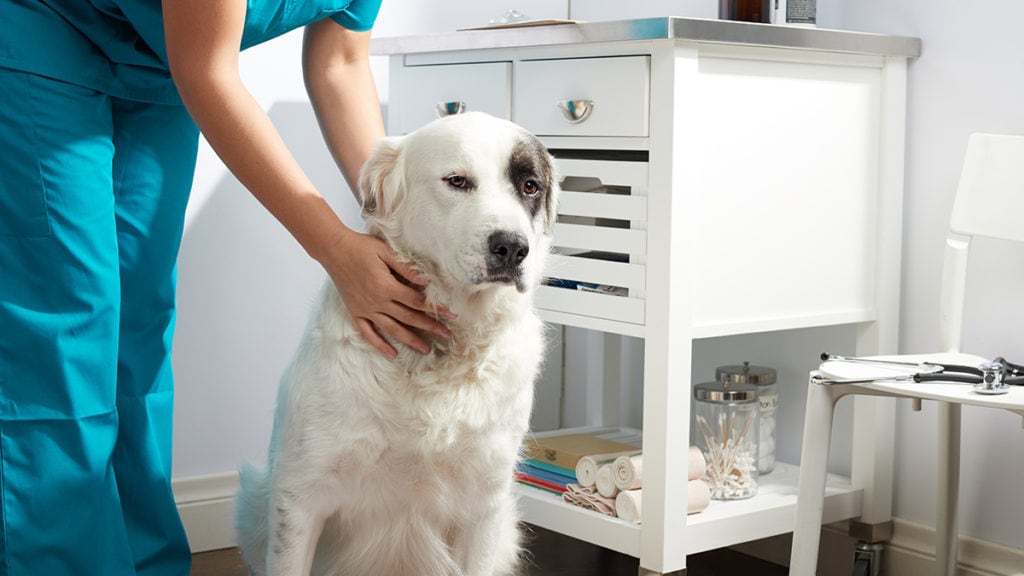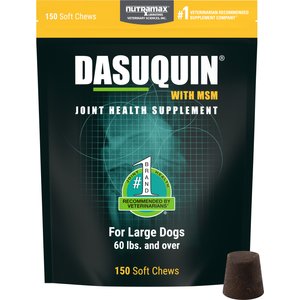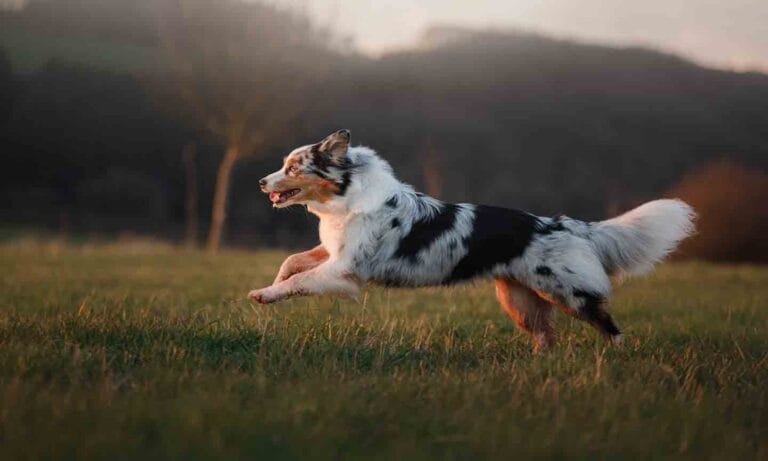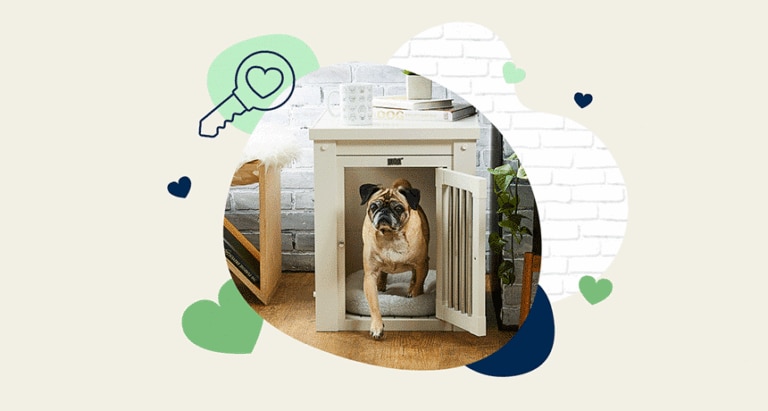I love all breeds of dogs. I love the cute, tiny ones; the medium-sized, high-energy breeds; and the large, slobbery, teddy bear dogs. My fur baby is a huge 150-pound Saint Bernard named Dory, and she keeps us very busy. So, as a veterinarian and fellow giant breed dog owner, I know all too well the concerns and problems that are unique to these giant breeds. Let’s discuss four common giant dog breed diseases and how we can help our pets.
1. Degenerative Joint Disease
Over time the cartilage that surrounds and protects your pets’ joints can begin to deteriorate. This is a condition known as osteoarthritis, or degenerative joint disease (DJD). Osteoarthritis is a chronic progressive condition resulting in permanent damage to the joints.
DJD commonly affects older dogs, and larger breeds are especially susceptible. The following is a list of the most common clinical signs we see:
- Difficulty and slowness rising after lying down
- Occasional lameness
- A stiff walk that worsens with exercise
- No longer jumping up on furniture
- Hesitant to climb up stairs
- Difficulty and slowness rising after lying down
Symptoms can vary with each pet and many times my clients do not even realize their pets are in pain. If your dog is exhibiting these signs, have him evaluated by your veterinarian.
There are many treatment and management modalities that may help your pet. For example, you can give your dog supplements to support joint health. I love Dr. Lyon’s Advanced Strength Hip & Joint supplements and Nutramax Dasuquin with MSM joint health supplement. But speak with your veterinarian regarding the best treatment plan for your pet.
2. Gastric Dilation Volvulus
Bloat is a condition in dogs that results from the stomach becoming severely inflated with gas. In severe cases, the stomach can twist upon itself resulting in a condition called gastric dilation volvulus. Gastric dilation volvulus (GDV) is an extremely serious condition and can lead to death if not treated immediately.
Certain breeds of dogs are more susceptible to this condition, especially large breed dogs with barrel shaped chests like Great Danes, Weimaraners and St. Bernards.
Common clinical signs of GDV are:
- Excessive salivation or drooling
- Vomiting
- Distended abdomen
- Swollen or enlarged abdomen
Treatment involves abdominal surgery in which the stomach is reduced back to normal position. The stomach is then sutured to the abdominal wall using a procedure called a gastropexy
This condition is serious and without treatment death is imminent. The longer the pet is experiencing bloat without treatment, the worst the prognosis is for recovery.
I always recommend raising your pets’ food bowl to their level to help prevent bloat. I like Platinum Pets Olympic Diner Elevated Slow Dog Bowl and Petmate Easy Reach Diner Elevated Dog Bowls. Speak with your veterinarian regarding preventative measures that can be recommended for your pet.
3. Wobbler Syndrome
Wobbler syndrome, also known as cervical spondylomyelopathy, is a disease caused by a compression of the cervical spinal cord, which leads to neck pain, and in severe cases neurological deficits.
Wobbler syndrome is commonly diagnosed in large or giant breed dogs, including Rottweilers, Great Danes, Irish Wolfhounds and Doberman Pinchers.
The most common clinical signs include:
- Distinct wobbly gait
- Weakness
- Difficulty getting up
- Partial or full paralysis
If your pet is exhibiting these signs, have your pet evaluated by your veterinarian. There are many treatment and management modalities that may help your pet. Check with your vet for the best treatment option.
4. Canine Hip Dysplasia
Hip dysplasia is a common skeletal disease that occurs in large and giant breed dogs. Hip dysplasia occurs when the joints do not develop correctly allowing for partial hip dislocation. Genetics play the most important role in hip dysplasia; however, nutritional factors and environmental factors can play a part, too.
The most common breeds affected by hip dysplasia are Great Danes, Saint Bernards, Labrador and Golden Retrievers and German Shepherds.
The most common clinical signs include:
- Hind-end lameness
- “Bunny-hopping” or swaying gait
- Difficulty moving or rising
- Exercise intolerance
- Reduced activity levels
- Hind leg muscle atrophy
Again, if your pet is exhibiting these signs, have your pet evaluated by your veterinarian.
Placing your puppy on a proper diet designed for large breed dogs, like Purina Pro Plan’s Focus dog food for large breed puppies, is helpful in preventing too rapid of a weight gain.
There are many treatment and management modalities that may help your pet. Speak with your veterinarian regarding the best treatment plan for your pet.
As a giant breed dog owner, I am always taking preventative measures to keep my big, teddy bear healthy and happy. I hope this article helps pet parents be aware of the diseases that giant breed dogs are predisposed to and the clinical signs to look for.
As always, the health and wellness of your pets are my top priority. If you have any questions or concerns, you should visit or call your veterinarian. They are your best resource to ensure the health and well-being of your pets.
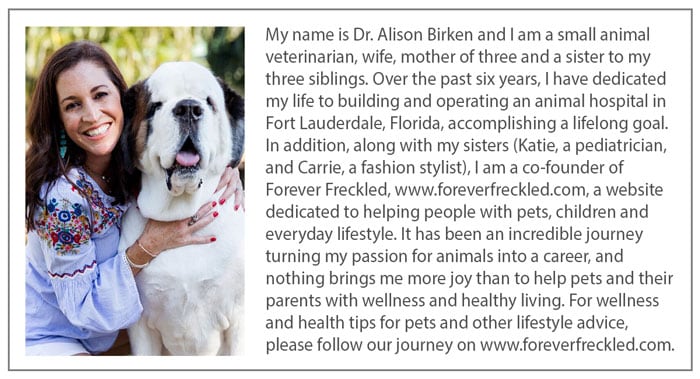
Share:
